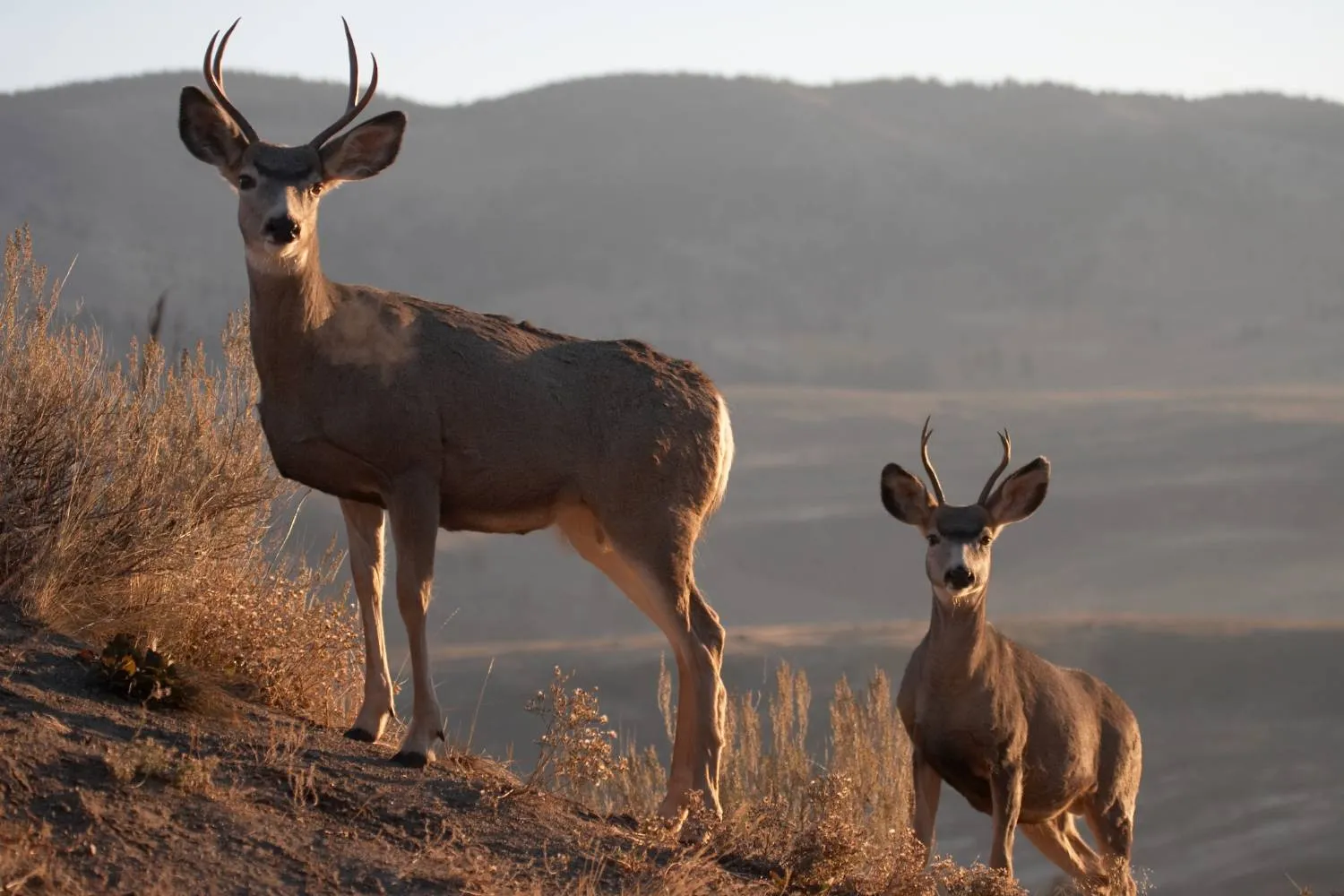As an avid traveler and nature enthusiast, few places have captivated my heart quite like Zion National Park. Its towering sandstone cliffs, lush hanging gardens, and the Virgin River carving its way through the canyon create a breathtaking backdrop for an incredible array of Zion National Park wildlife. If you're planning a trip and hoping to catch a glimpse of the park's fascinating inhabitants, you've come to the right place. This guide from National Park Shops, born from my own experiences and extensive research, will help you maximize your chances of unforgettable wildlife encounters.
Best time for wildlife viewing in Zion
Timing is everything when it comes to spotting Zion National Park wildlife. From my many visits, I've learned that the early morning and late evening hours, often referred to as the 'golden hours,' are by far the most rewarding. This is when many animals are most active, seeking food or water before the heat of the day sets in or as dusk approaches. Imagine the cool, crisp air as the sun just begins to kiss the canyon walls, illuminating a mule deer grazing peacefully, or the quiet anticipation as twilight descends, hinting at the nocturnal creatures soon to emerge.
While you can spot wildlife year-round, certain seasons offer unique opportunities. Spring, with its blossoming flora and milder temperatures, brings out a variety of animals, including bighorn sheep and deer. It's also a fantastic time to witness the park's birdlife in full swing. Fall is another excellent period, offering comfortable weather and active wildlife as they prepare for winter. Even Zion winter, though quieter, can be surprisingly good for wildlife watching, especially for those seeking solitude and a chance to see animals against a snowy backdrop. Reptiles, like the collared lizard and desert tortoise, are more likely to be seen during the warmer months when they are most active. So, while dawn and dusk are universally best, consider the season and the specific animals you hope to encounter when planning your visit to truly experience the rich Zion National Park wildlife.
>> Read More: Where Is Zion National Park? A Detailed Travel Guide
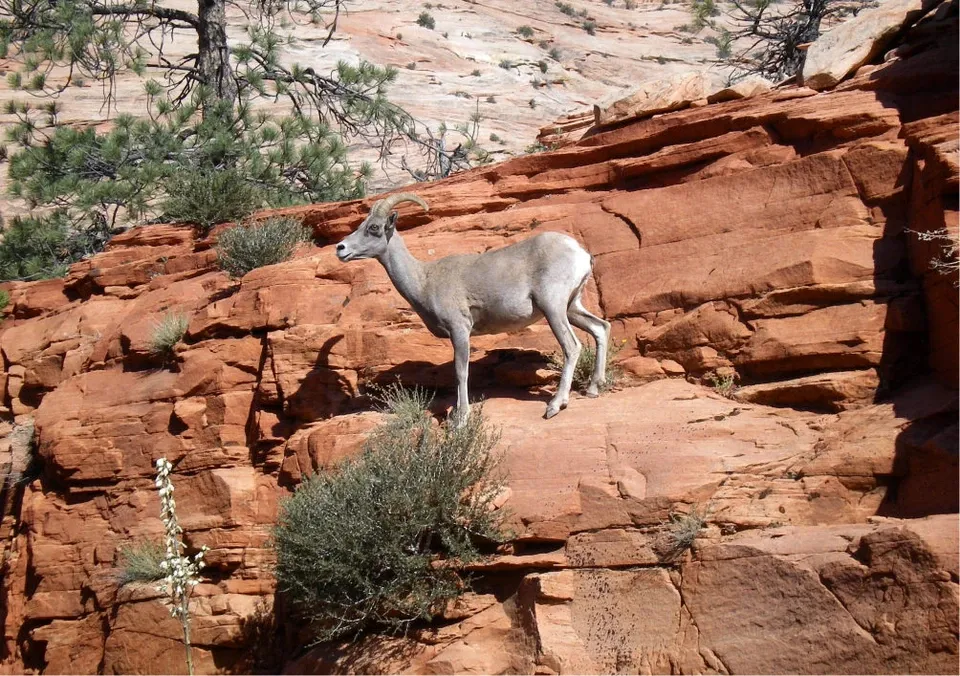
Popular to see for in Zion National Park wildlife
Zion National Park is a haven for diverse species, each playing a vital role in its unique ecosystem. During my explorations, I've been fortunate enough to witness many of these incredible creatures. Here's a closer look at some of the most popular and fascinating Zion National Park wildlife you might encounter:
Mountain Lion
The elusive mountain lion, or cougar, is the apex predator of Zion, a stealthy hunter that roams from the deep canyons to the high plateaus. While they are present throughout the park, spotting one is a rare and special event, a testament to their solitary and secretive nature. These magnificent big cats are incredibly powerful, capable of taking down large prey like mule deer and bighorn sheep. Though encounters are uncommon, it's important to be aware of their presence and understand safety guidelines, such as not running if you see one and making yourself appear large. Their presence is a sign of a healthy ecosystem, and ongoing studies help park biologists monitor their movements and health within Zion National Park wildlife.
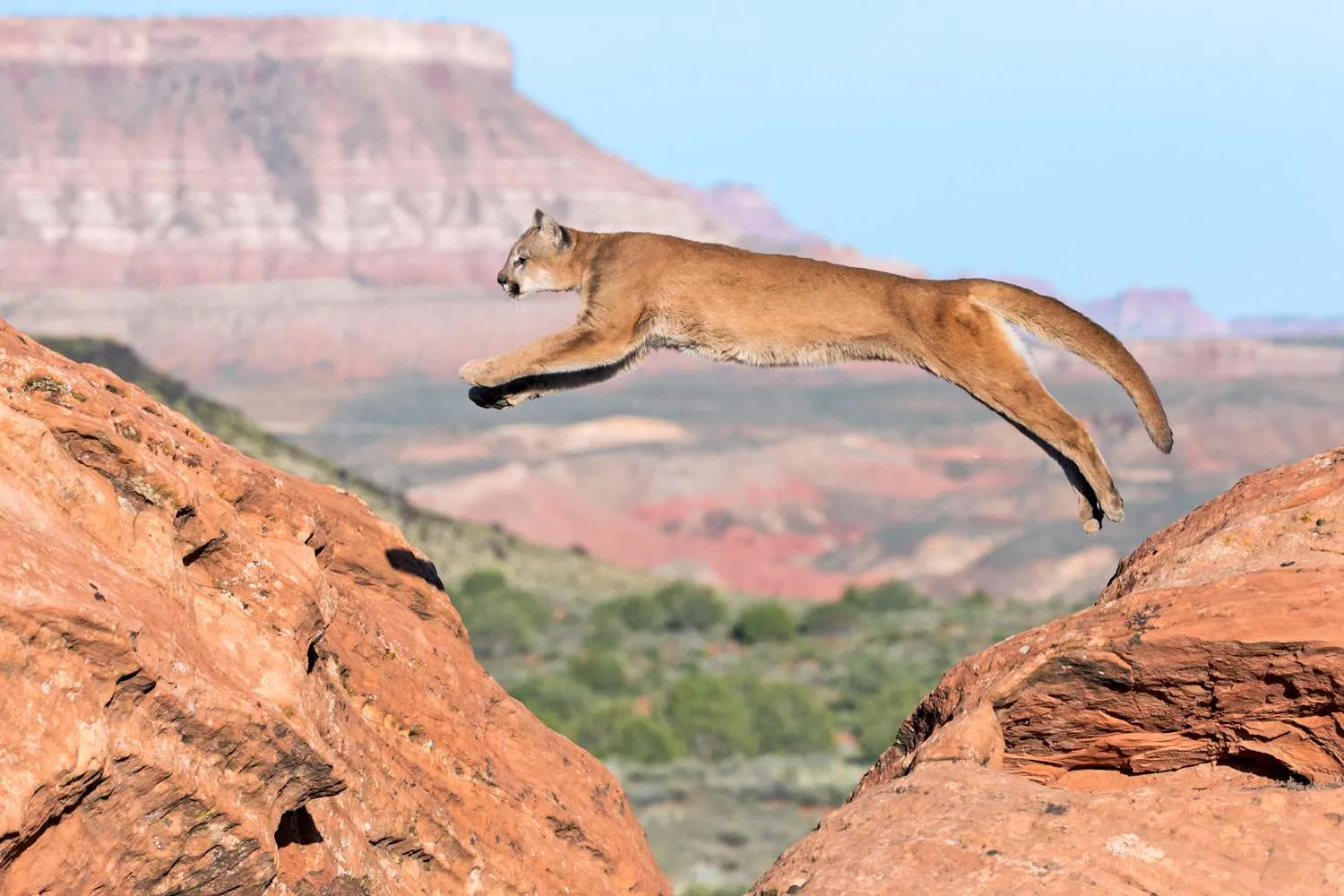
California Condor
Witnessing a California Condor soaring above Zion's majestic cliffs is an awe-inspiring experience. These critically endangered birds, with their impressive wingspans of up to 10 feet, are a symbol of successful conservation efforts. Once extinct in the wild, condors have been reintroduced to the region, and Zion National Park plays a crucial role in their recovery. They are often seen perched on or soaring above iconic landmarks like Angels Landing and the Kolob Canyons. Their curious nature sometimes brings them closer to human activity, offering incredible viewing opportunities. The park actively monitors these magnificent birds, and temporary climbing closures are often implemented to protect nesting sites, ensuring the continued recovery of this vital part of Zion National Park wildlife.
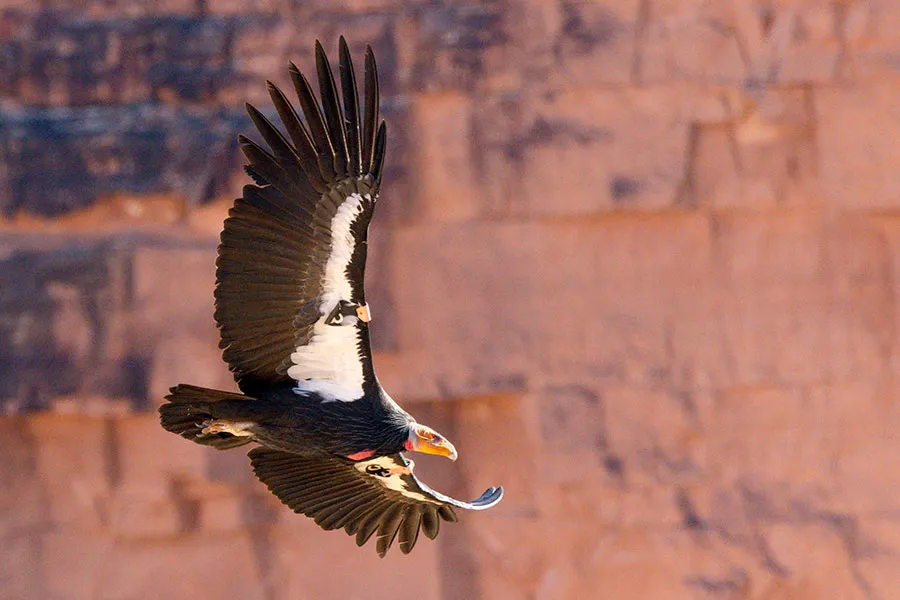
Mexican Spotted Owl
The Mexican Spotted Owl, a federally threatened species, finds sanctuary in the cool, moist canyons of Zion. These nocturnal raptors, with their distinctly chocolate-colored eyes, are masters of camouflage, blending seamlessly into their forested habitats. While they prefer old-growth forests, they have adapted to the unique canyon environments of Zion. Their presence highlights the park's commitment to protecting sensitive species. If you're lucky enough to spot one, it will likely be in a quiet, shaded area, a reminder of the delicate balance of Zion National Park wildlife.
>> Read More: 13 Zion National Park Caves: Must-Visit Spots
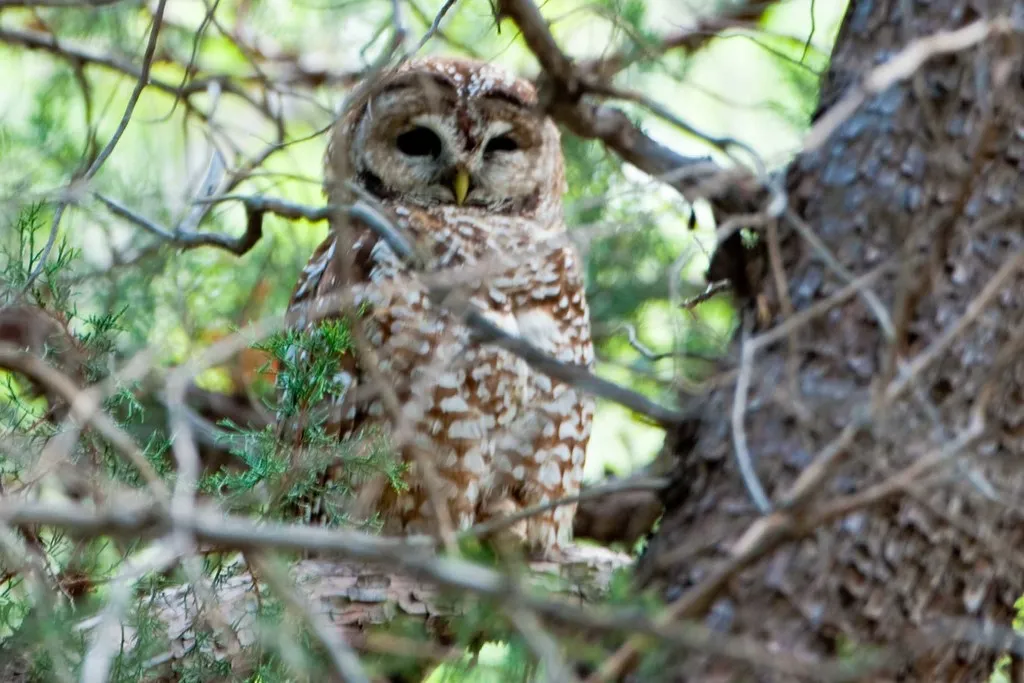
Mule Deer
Mule deer are perhaps one of the most commonly sighted mammals in Zion Canyon, often seen gracefully navigating the canyon floor. Named for their large, mule-like ears, these deer are well-adapted to the desert environment. They are most active during the golden hours of dawn and dusk, making these times ideal for spotting them grazing peacefully. I've often seen them near the Virgin River or even on the lawns around Zion Lodge in the evenings. Their calm demeanor often allows for excellent viewing and photography opportunities, making them a favorite among visitors observing Zion National Park wildlife.
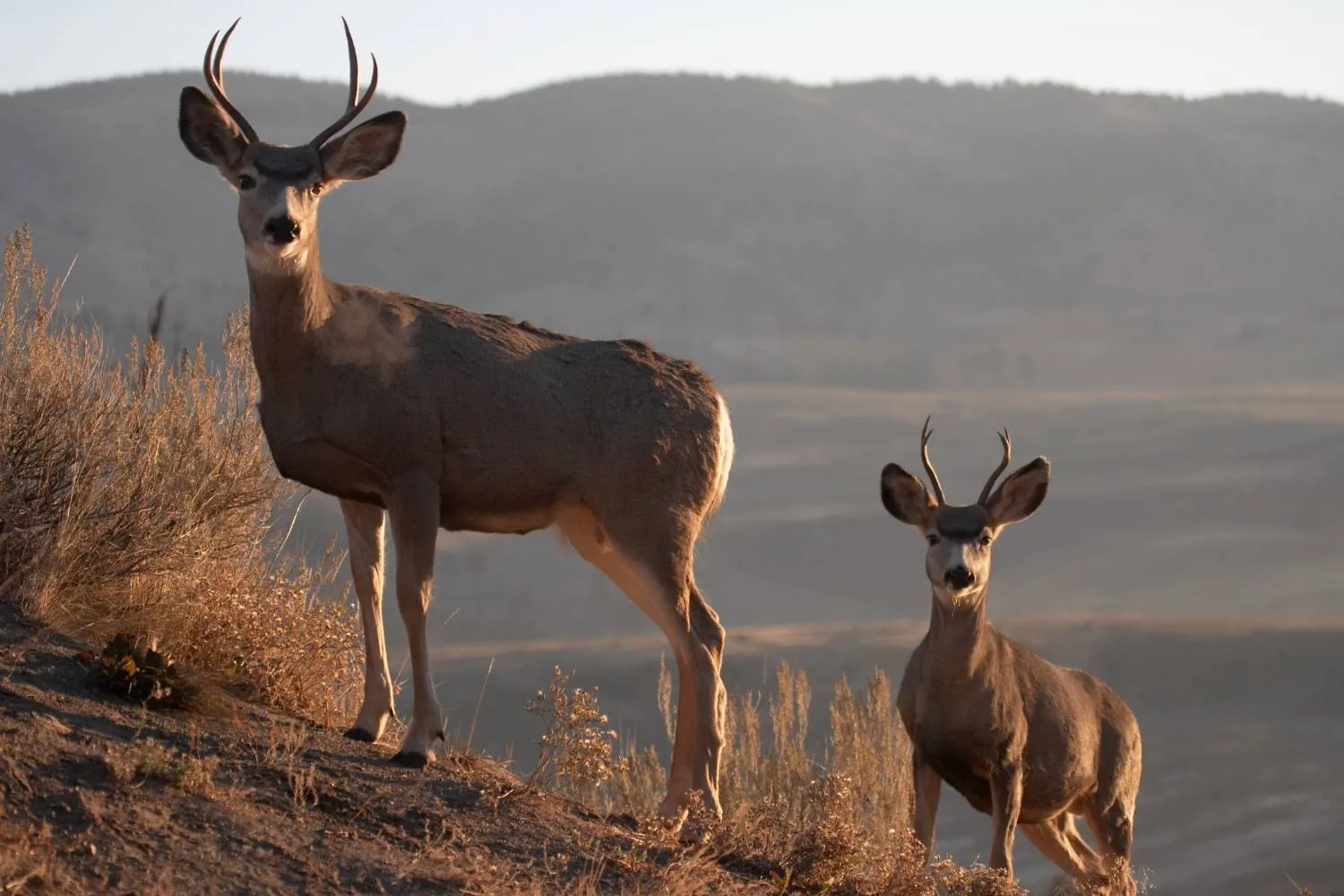
Collared Lizard
The Great Basin collared lizard is a vibrant and surprisingly quick reptile found in Zion. These carnivorous lizards, which can grow up to 14 inches long, are known for their ability to stand up and run on their hind legs when threatened, reaching speeds of up to 16 mph. They prefer rocky slopes and can often be seen basking in the sun on warm rocks. Their distinctive black and white collars make them easily identifiable. While they might be less frequently seen than other animals, spotting a collared lizard is a unique treat for those exploring the reptile diversity of Zion National Park wildlife.
>> Read More: Zion National Park Entrances: Directions to Each Access Point
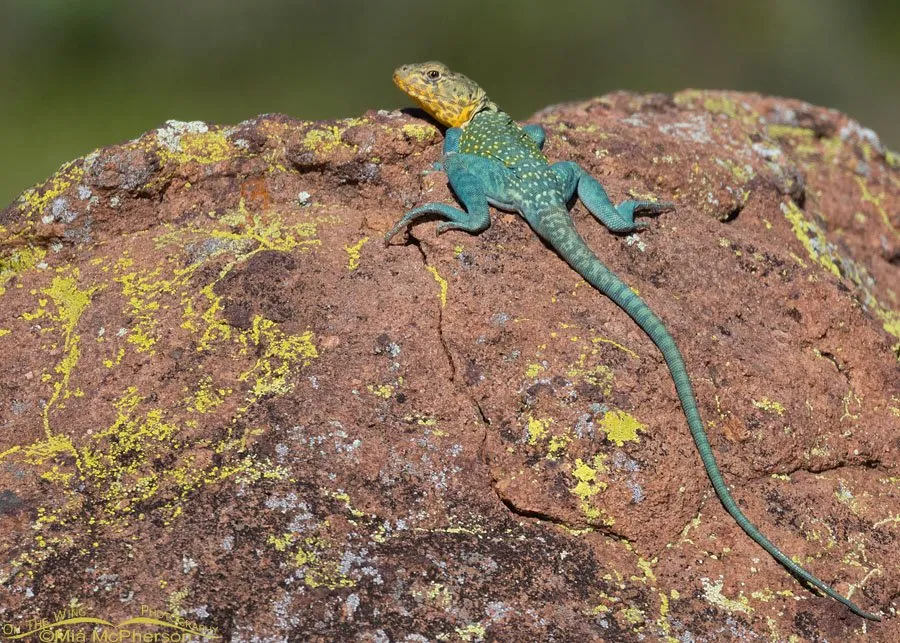
Desert Tortoise
A rare but truly special sighting in Zion is the elusive desert tortoise. These long-lived reptiles are residents of the Mojave Desert, which extends into the northern reaches of Zion. Unlike turtles, they have high-domed shells and elephant-like rear legs, perfectly adapted for their arid habitat. They spend much of their lives underground, emerging to forage after rain or during cooler parts of the day. If you're fortunate enough to see one, remember they are a protected species, and it's crucial not to disturb them. Their presence underscores the unique desert ecosystem that supports Zion National Park wildlife.
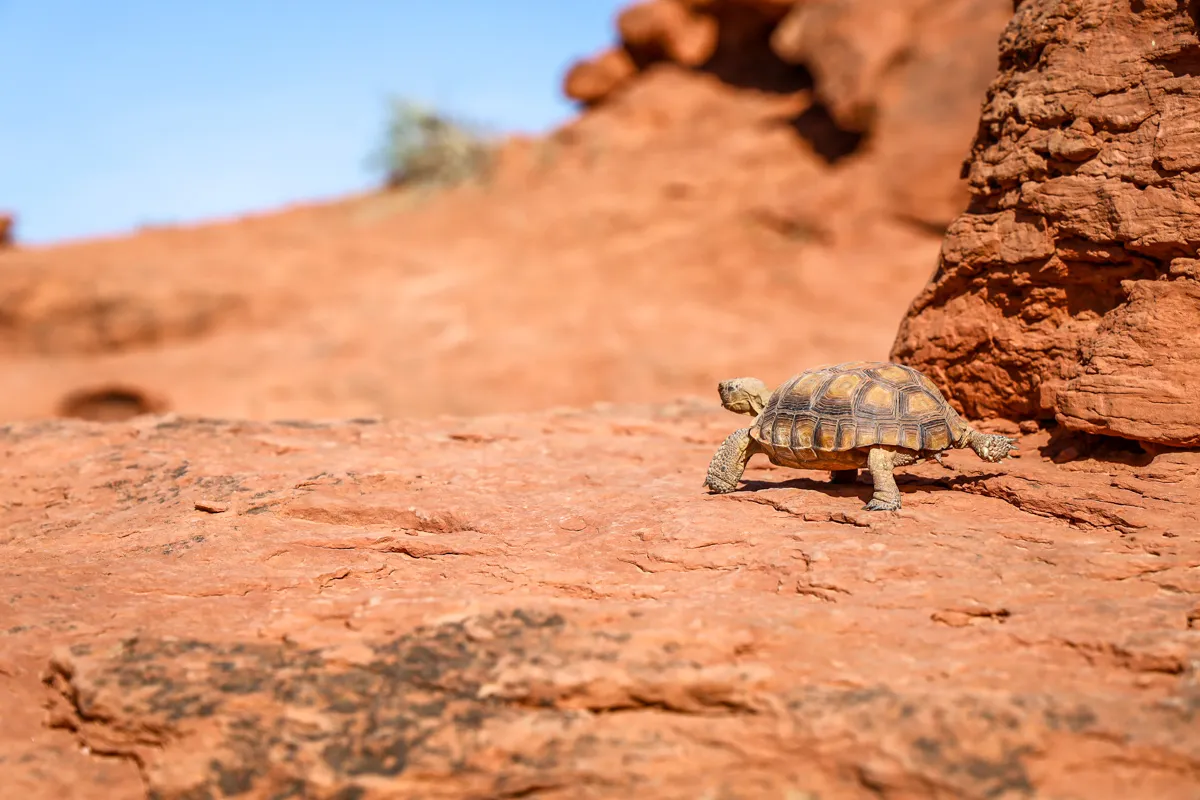
Ringtail Cat
The ringtail, often mistaken for a cat but actually a member of the raccoon family, is a small, nimble, and primarily nocturnal creature. With their bushy, ringed tails, they are incredibly agile climbers, often found in rocky areas and canyons. While they are quite common in Zion, their nocturnal habits and secretive nature make them difficult to spot. If you're camping or staying near the park, you might hear their calls at night or catch a fleeting glimpse of their nimble movements. Their adaptability and elusive charm make them a fascinating part of Zion National Park wildlife.
>> Read More: Camping Near Zion National Park: Best Spots (Reservation)
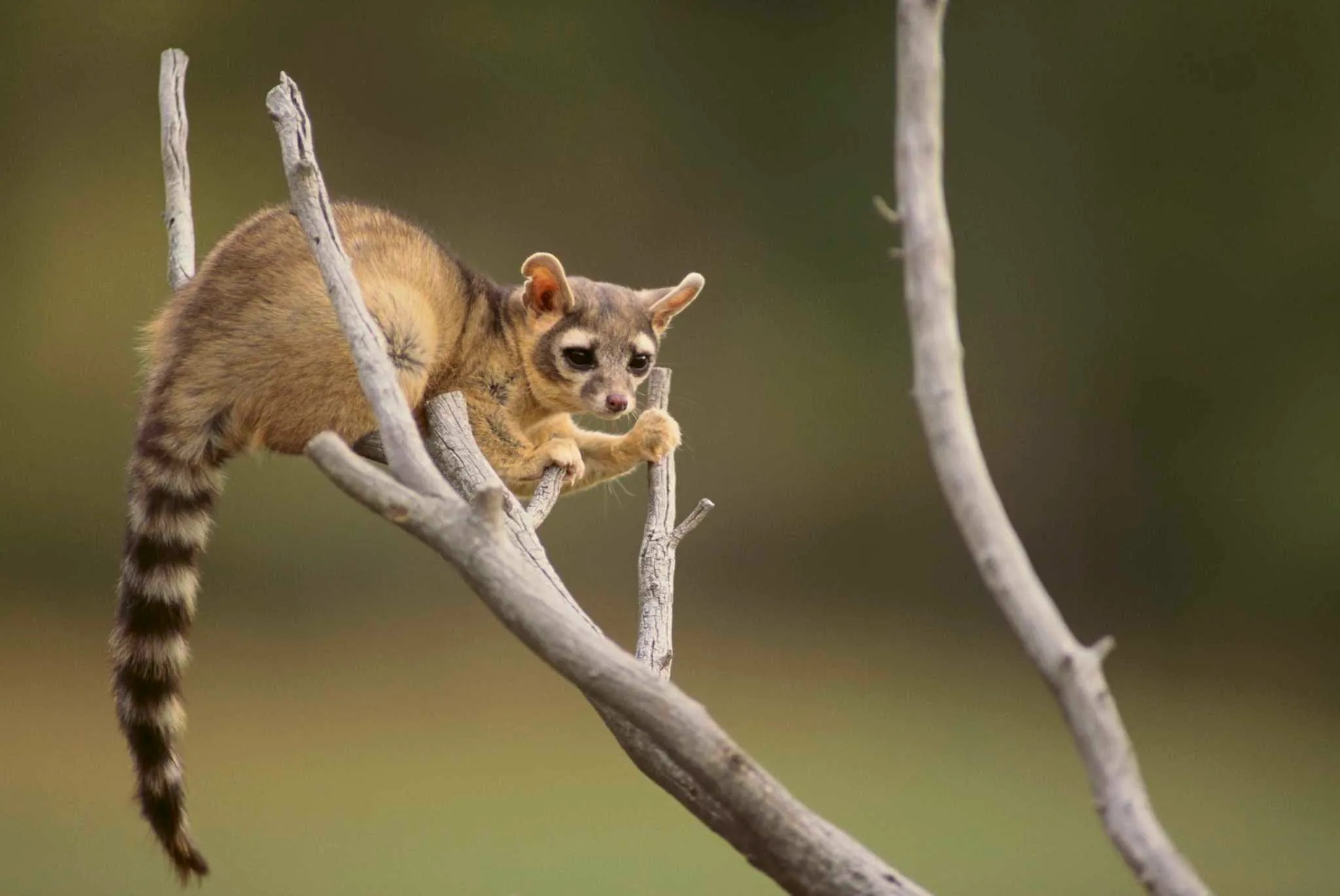
Bighorn Sheep
Desert bighorn sheep are a magnificent sight, known for their impressive curved horns and incredible agility on steep, rocky terrain. Once extirpated from the Zion area, they have been successfully reintroduced and are now a thriving part of the park's ecosystem. They are often seen on the East side of Zion, particularly along the scenic drive through the tunnel, where the rugged cliffs provide ideal habitat. Watching them effortlessly navigate seemingly impossible inclines is a true marvel. Their resilience and majestic presence are a highlight of Zion National Park wildlife.
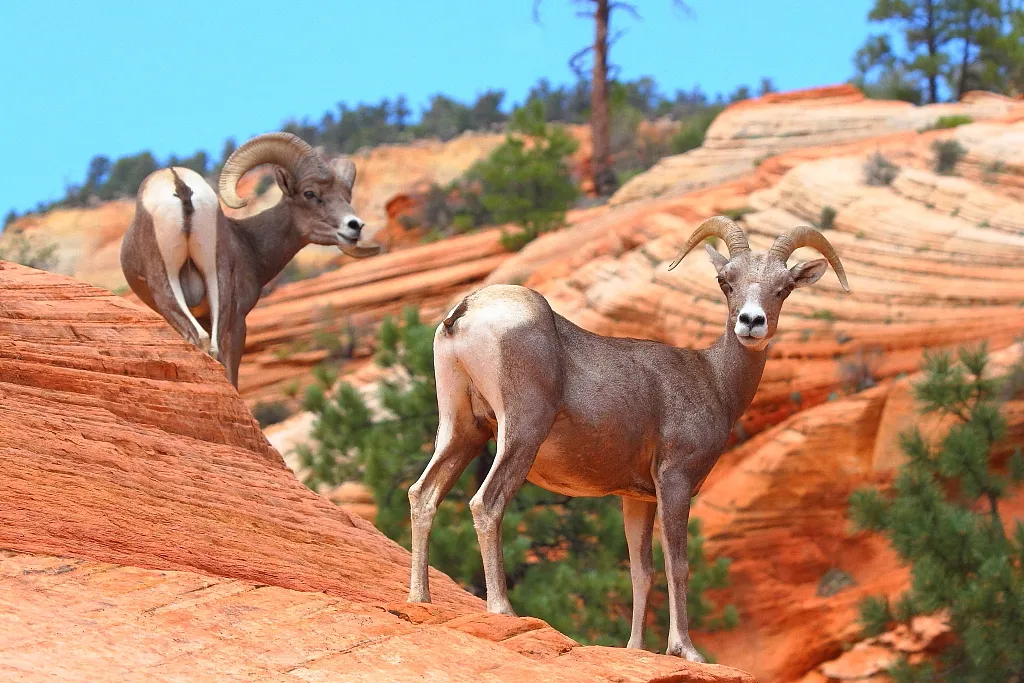
Rock Squirrel
While seemingly innocuous, the rock squirrel is one of the most commonly encountered and, surprisingly, one of the most interactive Zion National Park wildlife. These ground squirrels, identifiable by their mottled fur, are not shy and can be seen climbing rocks, trees, and even approaching visitors in search of food. While their boldness can be endearing, it's crucial not to feed them, as human food is detrimental to their health and can lead to aggressive behavior. They are a constant, lively presence throughout the park, especially around picnic areas and trailheads.
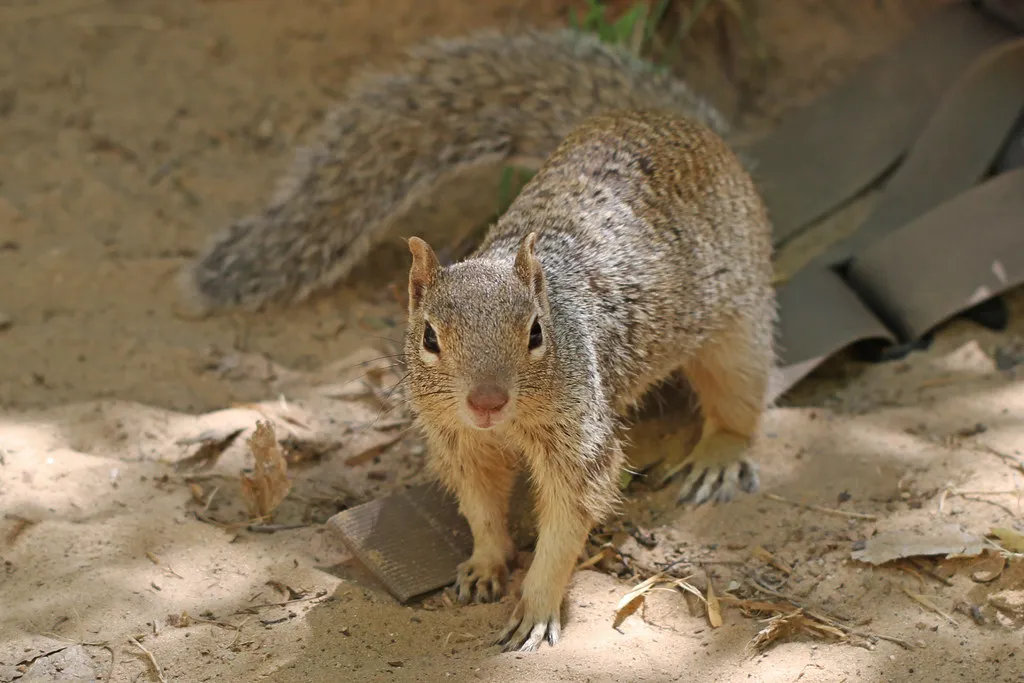
Jackrabbits
Black-tailed jackrabbits are a common sight in the open, arid areas of Zion. Despite their name, they are actually hares, characterized by their long ears and powerful hind legs, which allow them to reach impressive speeds. You'll often spot them in meadows and along the less-trafficked trails, especially during dawn and dusk. Their ability to blend into the desert landscape makes them a fun challenge to spot, but their distinctive bounding gait often gives them away. They are an important part of the prey base for larger predators in Zion National Park wildlife.
>> Read More: 16 Best Things to Do in Zion National Park: Unique Experiences
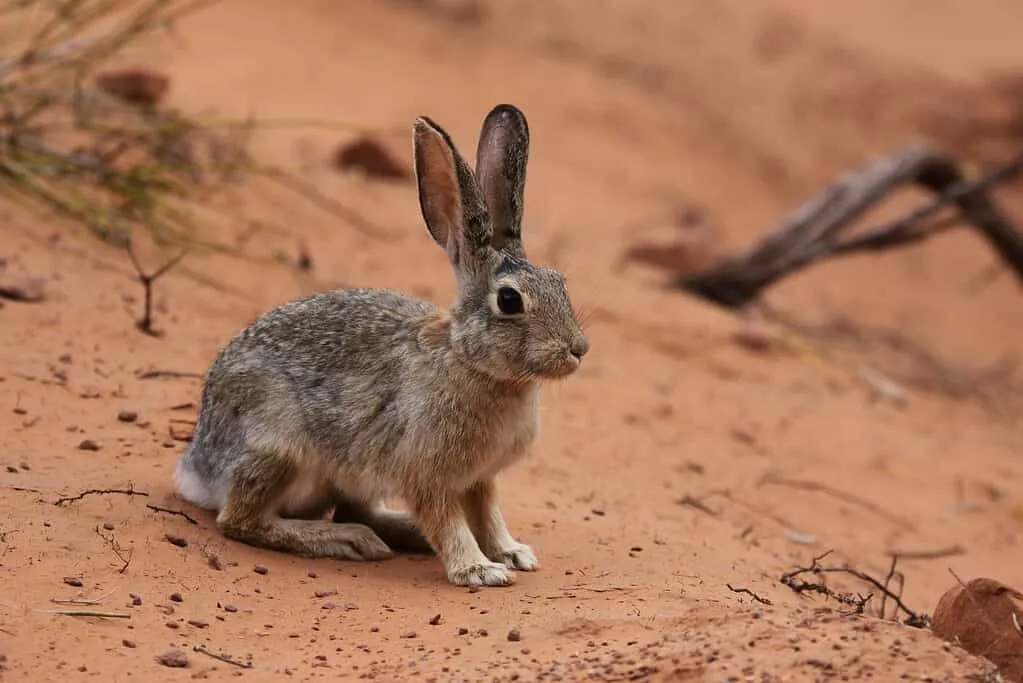
Peregrine Falcon
The Peregrine Falcon, renowned as the fastest bird on Earth, is a breathtaking sight as it dives through the canyons of Zion. These powerful raptors thrive in the park's open landscapes and high cliffs, which provide ideal nesting sites and hunting grounds. They primarily prey on other birds, executing spectacular aerial pursuits. Zion National Park actively monitors peregrine falcon nesting sites, and certain climbing routes are temporarily closed during nesting season to protect these magnificent birds. Catching a glimpse of a peregrine falcon in action is a truly unforgettable experience for any bird enthusiast visiting Zion National Park wildlife.
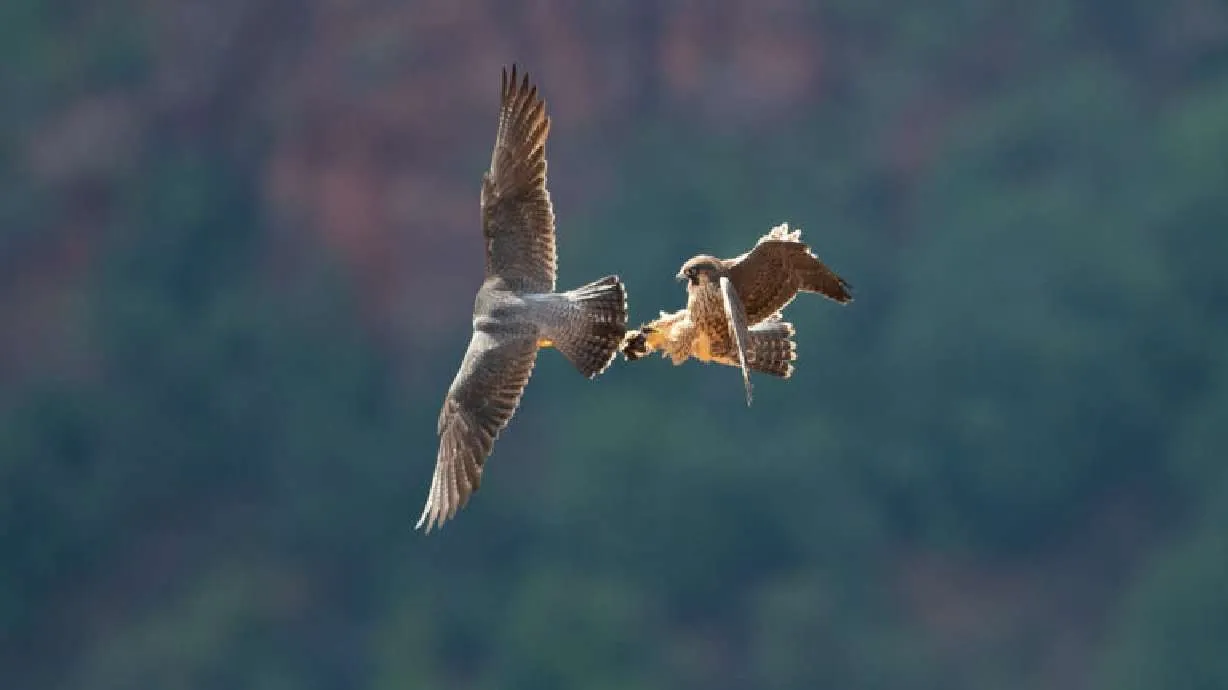
Best Places for Wildlife Watching
While wildlife can be encountered almost anywhere in Zion, some locations offer consistently better viewing opportunities. Based on my visits, here are some prime spots:
Prime Wildlife Viewing Locations
- Pa'rus Trail: This paved, relatively flat trail follows the Virgin River and is a fantastic spot for seeing mule deer, various bird species, and rock squirrels. The presence of water makes it a magnet for many animals.
- Zion Canyon Scenic Drive: When the shuttle isn't running (typically during the off-season or very early/late in the day during peak season), driving this road allows for quiet observation. Mule deer are frequently seen along the roadside, and you might spot other mammals.
- Kolob Canyons: Located in the less-crowded northern section of the park, Kolob Canyons offers a more serene environment for wildlife viewing. The quiet trails and diverse habitats increase your chances of spotting a wider range of animals, including raptors and larger mammals.
- Riverside Walk: Leading to the Narrows, this trail is another excellent spot for mule deer and various bird species due to its proximity to the Virgin River.
- The Zion Lodge Area: Especially in the evenings, mule deer often graze on the lawns around the lodge, offering easy and close-up viewing opportunities.
Remember to always maintain a safe and respectful distance from all Zion National Park wildlife. The general rule is 50 feet for small mammals and birds, and 100 feet for deer and larger animals. Never feed wildlife, as it can harm them and alter their natural behaviors.
Best Zion National Park Wildlife Trails
Beyond general viewing spots, certain trails offer unique opportunities to immerse yourself in the habitats of Zion National Park wildlife.
Angel's Landing Trail
While famous for its thrilling chains section and panoramic views, the Angel's Landing Trail also offers potential wildlife sightings, particularly in its earlier, less strenuous sections. As you ascend towards Scout Lookout, keep an eye out for rock squirrels and various bird species. The sheer cliffs are also prime habitat for raptors, including the California Condor and Peregrine Falcon, which can often be seen soaring overhead. Mexican Spotted Owls have also been sighted in the quieter, shaded alcoves along this trail. Remember, this is a challenging hike, so focus on safety first, but keep your eyes peeled for the incredible wildlife that calls these heights home.
The Watchman Trail
Starting near the Zion Visitor Center, the Watchman Trail offers a moderate climb to a stunning viewpoint overlooking the Watchman peak, lower Zion Canyon, and the town of Springdale. This trail is particularly good for spotting desert cottontails, various lizards (including the collared lizard), and a variety of birds. Its accessibility and diverse terrain make it a rewarding hike for those interested in observing the smaller, but equally fascinating, Zion National Park wildlife.
Emerald Pools Trail
The Emerald Pools Trail is a lush oasis in the arid landscape of Zion Canyon, making it a magnet for wildlife. This trail system, with its lower, middle, and upper pools, features cascading waterfalls and tranquil environments. It's an excellent place to see mule deer, especially near the water sources, and a wide array of songbirds. You might also spot canyon tree frogs near the pools. The unique microclimate created by the hanging gardens supports a different set of species, offering a refreshing contrast to the more open desert environments and providing a vibrant display of Zion National Park wildlife.
Conclusion
Zion National Park is more than just a landscape of stunning geological formations; it's a vibrant ecosystem teeming with life. From the majestic California Condor soaring high above to the nimble rock squirrels scampering along the trails, every encounter with Zion National Park wildlife adds another layer of wonder to your visit. By understanding their habitats, respecting their space, and knowing when and where to look, you can transform your trip into an unforgettable wildlife adventure. So pack your binoculars, bring your camera, and prepare to be amazed by the wild heart of Zion. Happy travels!
>> Read More:

